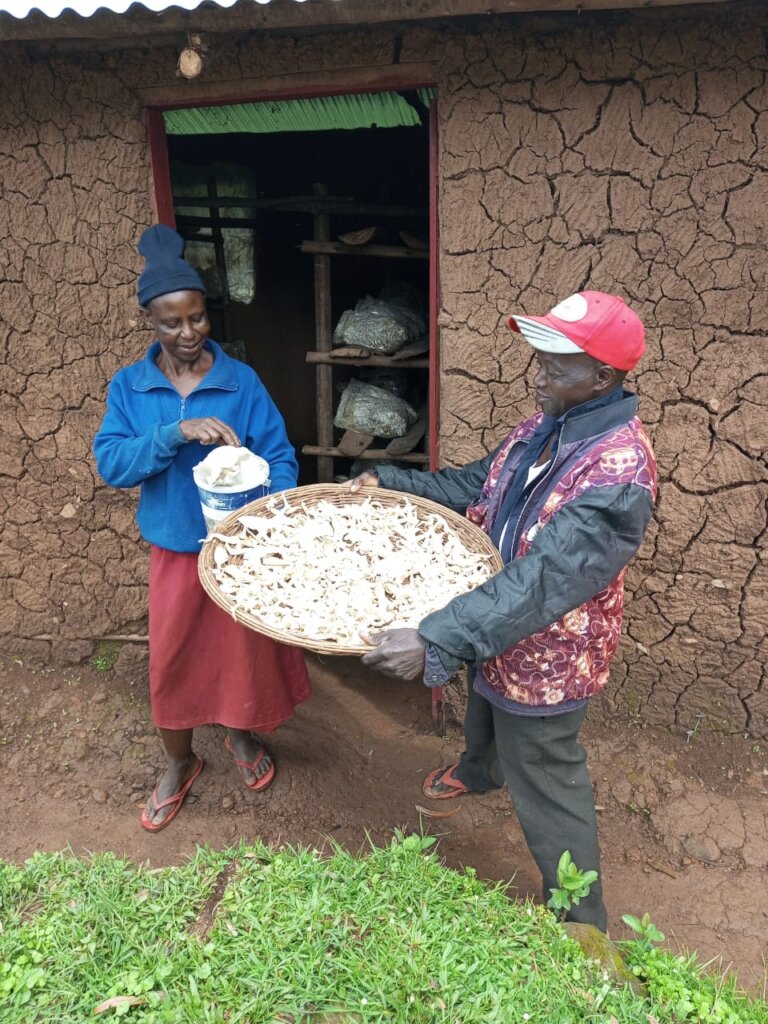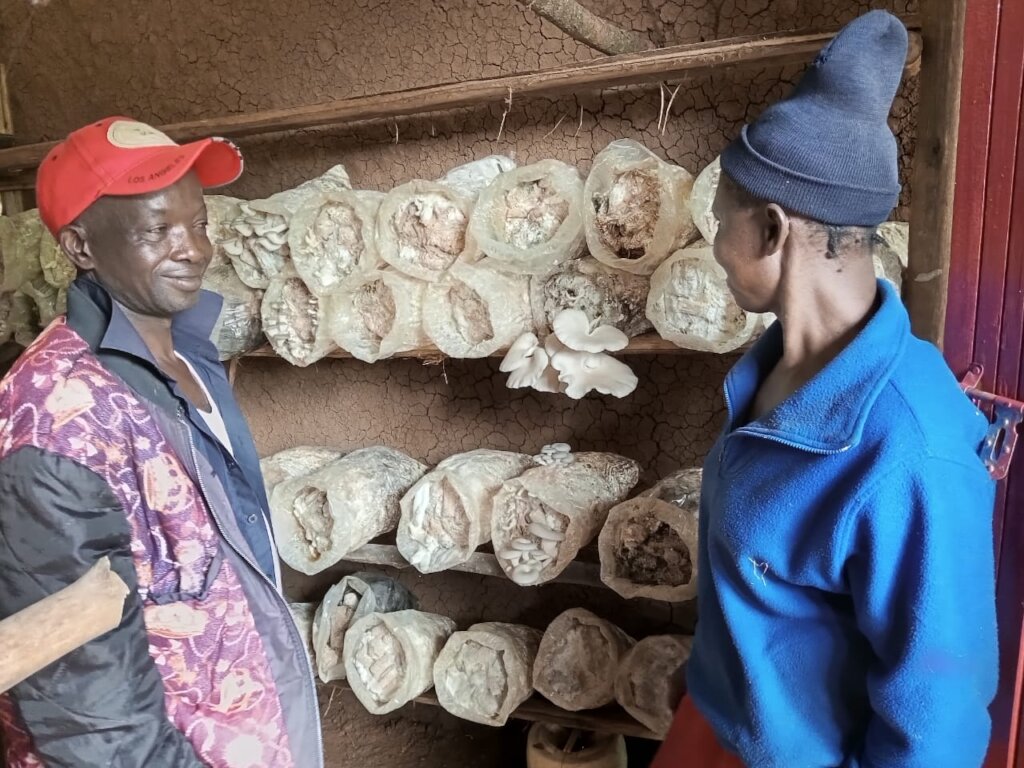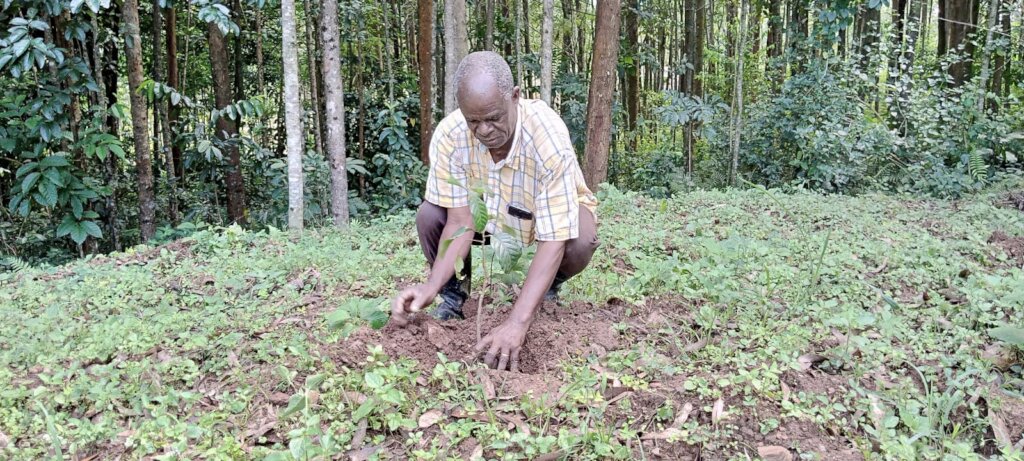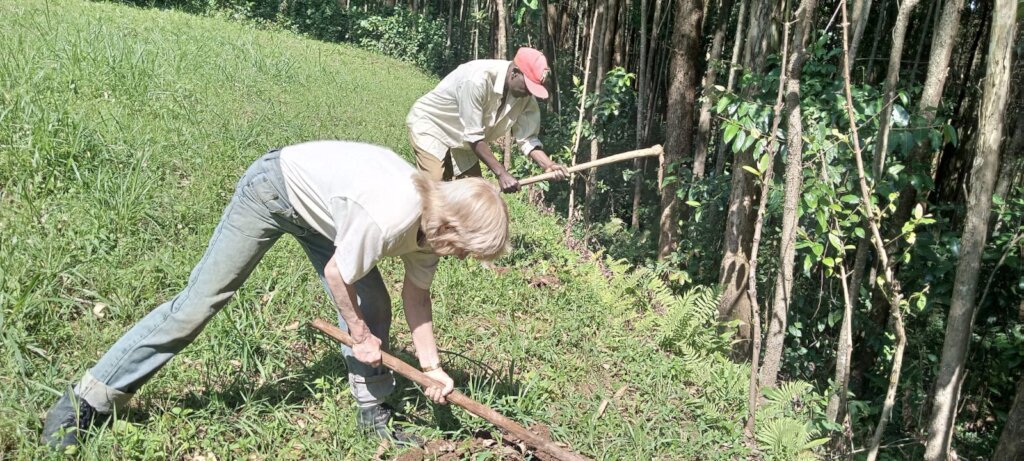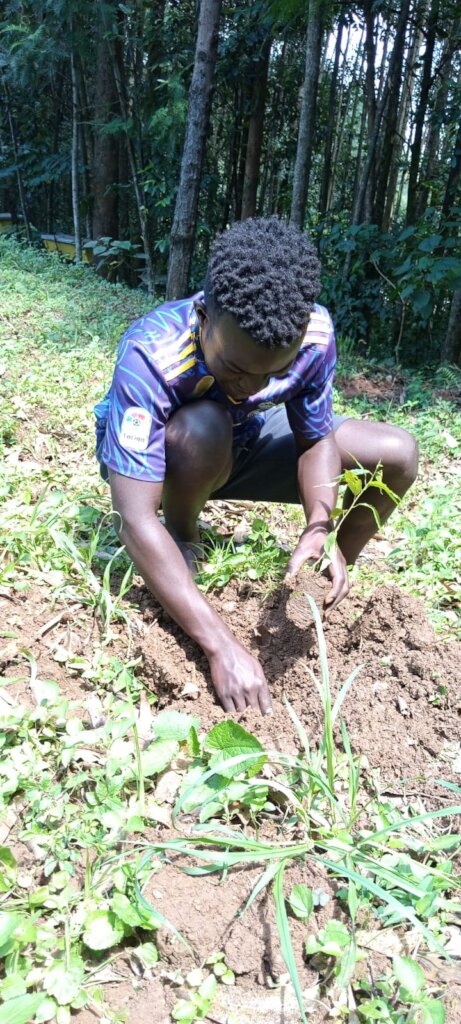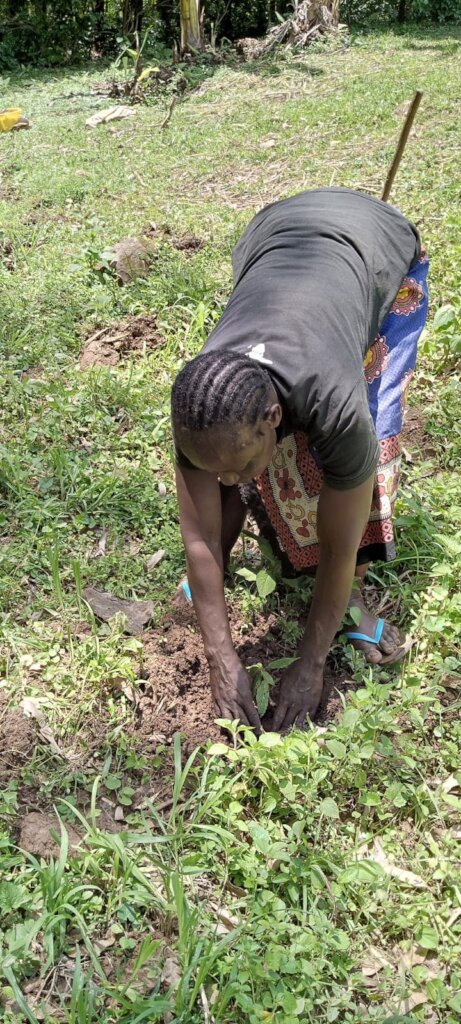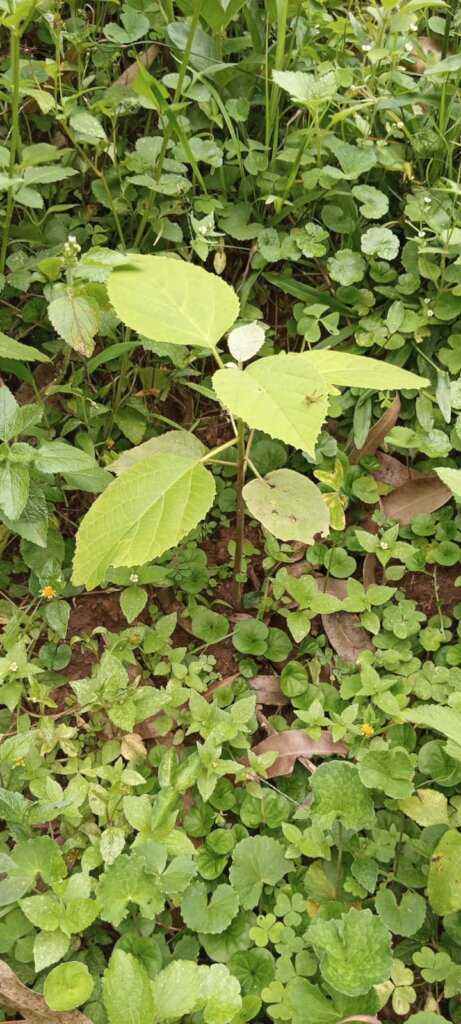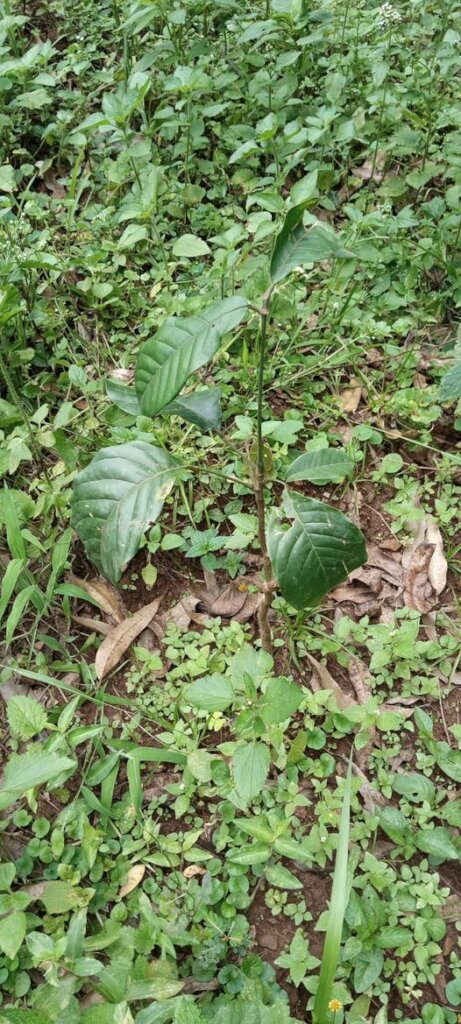By Constance Hunt | Executive Director
Dear Donors:
With your valuable support, we enjoyed an exemplary team experience animating the IGAs on Zablon's farm in August. Here is what we accomplished:
1. Inspection and cleaning of the hives, with additional training on their maintenance. Akalanga, a local trainer of researchers with the International Centre of Insect Physiology and Ecology (ICIPE) found the reason that 2 of the hives had not been colonized: they had been invaded by ants! Akalanga taught Farmer Zablon how to clean the hives and prevent ants from entering them in the future.
2. Seeding the mushrooms. Planting the mushrooms involved a number of steps: first, we prepared the substrate and stuffed it into sacks. The substrate was a mixture of fibrous byproducts of other production processes, such as corn husks, saw dust and debris from trimmed woody vegetation. We soaked the sacks in the growing medium, which was a witch's brew of water, molasses (food for baby mushrooms), lime (to counter acidity) and bleach (to prevent undesireable microorganisms from infecting the substrate sacks). We perforated the sacks and steamed them over fire well into the night. The next day, we innoculated the substrate sacks with commerical oyster mushroom spores. Then we went into the forest to collect spores of a wild species of woodear mushroom so that we could experiment with producing native mushrooms to replace depleted colonies in the forest. Within just a few days, the sacks were bursting with baby mushrooms.
3. Planting of hardwood seedlings on the farm: Species included umbrella tree (Maesopsis eminii) - 80 seedlings; African cherry (Prunus africana) - 30; Sudan teak (Cordia abssynica or C. africana) - 20; Elgon teak (Olea capensis weliwitschii) - 12; East African satinwood (Zanthoxylum gilleti) - 10; Natal mahogany (Trichilea emetica) - 10 and East African mahogany (Khaya anthotheca) - 10. When the trees are mature they will fetch a high price for the crafting of fine furniture, doors, veneers and other quality wood products, As they grow, the blossoms will provide nectar for the bees and their fallen leaves will serve as substrate to produce new crops of mushrooms as the exhausted mushroom substrate becomes mulch for Farmer Zablon's crops.
We are looking forward to expanding the IGAs to other farms surrounding the forest. To this end, we are enlisting the help of the Kenya National Farmers Federation (KENAFF). KENAFF works with small farmers in Kakamega to adopt agroecology and cooperate on a holistic approach to agribusiness that encompasses production, processing, distribution and consumption.
In addition to expanding the IGAs to more farms, the next phase of the Kakamega Rainforest Restoration Project will involve the formation of a cooperative with a savings and loan function to facilitate market penetration and value chain development for forest-loving products.
Keep tuned - things are getting lively!
Project reports on GlobalGiving are posted directly to globalgiving.org by Project Leaders as they are completed, generally every 3-4 months. To protect the integrity of these documents, GlobalGiving does not alter them; therefore you may find some language or formatting issues.
If you donate to this project or have donated to this project, you can recieve an email when this project posts a report. You can also subscribe for reports without donating.
Support this important cause by creating a personalized fundraising page.
Start a Fundraiser